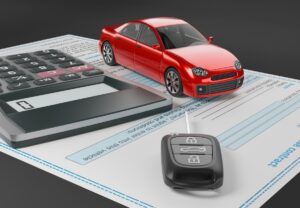
Vehicle Insurance
Vehicle Insurance Explained: What You Need to Know
Vehicle insurance is a key safety net that every car owner needs but often only thinks doesn’t about it once it’s necessary. From minor fender benders to major accidents, having the right coverage can save you money, stress, and a lot of headaches.
This comprehensive guide will break down the essentials of vehicle insurance, its features, benefits, and the critical factors to consider. Whether you’re evaluating your current policy or shopping for one for the first time, you’ll find practical tips and insights here.
What is Vehicle Insurance?
Vehicle insurance is a contract between a car owner and an insurance company that provides financial protection in case of accidents, theft, or damages. By paying a premium, you secure coverage that helps minimize out-of-pocket expenses associated with repairs, medical costs, and liability claims.

Essentially, it’s there to protect not just your wallet but the safety and well-being of everyone on the road. Many governments also enforce vehicle insurance as a legal requirement to ensure drivers take responsibility for any damages they may cause.
Key Features of Vehicle Insurance
When you purchase a vehicle insurance policy, you’re gaining access to features like:
- Coverage Against Accidents: Financial support for repairs, replacements, or liabilities resulting from collisions.
- Third-Party Liability Protection: Coverage for damages or injuries you cause to others while driving.
- Coverage for Theft or Vandalism: Protection in case your car is stolen or damaged due to vandalism.
- Personal Accident Cover: Helps cover medical expenses or loss of income due to injuries sustained in an accident.
- Add-Ons (Riders): Based on your specific needs, you can customize your policy with extras such as roadside assistance, engine protection, or zero depreciation coverage.
Benefits of Vehicle Insurance
Why is vehicle insurance essential? Here are some compelling reasons:
- Financial Protection: Avoid the significant costs of accidents, repairs, or medical bills.
- Legal Compliance: Stay on the right side of the law by meeting government-mandated minimum insurance requirements.
- Peace of Mind: Drive stress-free, knowing you’re covered for unforeseen situations.
- Customizable Plans: Tailor coverage to meet your specific needs with add-ons like coverage for natural disasters, engine failure, or total loss of the vehicle.
- Savings on Repairs: With cashless garages tied to your insurer, you may pay little to nothing upfront for car repairs.
What Are the Different Types of Vehicle Insurance?
Vehicle insurance isn’t a one-size-fits-all solution, and it’s essential to understand which policy works best for your needs. Here are the three primary types:
1. Liability-Only Insurance
This is the most basic and legally required form of vehicle insurance. It covers third-party damages—like when you hit another car—but does not protect you or your vehicle.
2. Comprehensive Insurance
This type of policy offers both third-party liability and cover for your vehicle. It protects against accidents, theft, fire, vandalism, and natural disasters, providing an expansive safety net.
3. Collision Coverage
Designed explicitly for accidents, this covers repairs or replacement of your car regardless of who is at fault.
Each option comes at different price points, depending on their coverage level.
How Does Vehicle Insurance Work?
Here’s a simple breakdown of how vehicle insurance operates:
- Purchase a Policy: Choose an insurance plan that suits your needs and pay the premium.
- Coverage Activation: Your coverage begins the moment your policy is active.
- Pay Premiums: Continue to pay premiums regularly to maintain coverage.
- File Claims: If something happens—like an accident or theft—you can file a claim for financial reimbursement or repair costs.
- Claim Resolution: An insurance adjuster assesses your loss and confirms your coverage benefits.
Factors Affecting Insurance Rates
Several variables influence the premium you’ll pay for vehicle insurance:
- Driving History: A clean driving record lowers risks for insurers, resulting in reduced rates.
- Vehicle Type: High-performance or luxury vehicles often have higher premiums due to costly repairs and greater theft likelihood.
- Location: If you live in an urban area with heavy traffic or higher theft rates, expect higher premiums.
- Age and Gender: Younger, less experienced drivers often pay more than older, seasoned drivers.
- Credit Score: Insurers in some regions use your credit rating to determine financial risk.
- Usage Frequency: A car used daily for long commutes usually commands higher rates than one driven occasionally.
Tips for Saving on Vehicle Insurance
Vehicle insurance doesn’t need to cost a fortune. Here are some practical strategies to lower your premium:
- Bundle Policies: Combine your vehicle policy with home or other insurance plans to take advantage of discounts.
- Increase Deductibles: Opt for a higher deductible to reduce your monthly premium (just be sure you can cover the deductible if needed).
- Seek Discounts: Many insurers provide discounts for safe driving courses, anti-theft device installations, or being a long-term customer.
- Maintain a Good Driving Record: Avoid accidents, speeding tickets, and other violations.
- Shop Around: Compare quotes from multiple insurers to find a policy that offers the best coverage and rates.
Understanding Claims
Filing a vehicle insurance claim can feel overwhelming if you’ve never done it. Here’s a step-by-step guide to help you through the process:
- Assess the Situation: Ensure everyone is safe and call emergency services if necessary.
- Document the Incident:
- Inform Your Insurer:
- Wait for an Adjuster:
- Approval and Payout:
- Usage-Based Insurance (UBI): With the help of telematics, insurers can monitor driving habits to offer customized premiums that reward safe drivers.
- AI and Automation: Claims processing and risk assessment are becoming faster and more accurate through advanced AI technologies.
- Autonomous Vehicles: The rise of self-driving cars could shift liability to manufacturers, changing the landscape entirely.
- Climate-Driven Coverage: Insurers are adapting to cover risks like floods and fires linked to climate change.
These innovations promise improved efficiency, better customer experiences, and personalized services tailored to individual drivers.
Read More: Motor insurance
Take Control of Your Coverage
Vehicle insurance is not just about ticking a legal box—it’s about equipping yourself with a safeguard that can make a difference when needed. Whether signing up for your first policy or revisiting your existing coverage, this guide should help you make informed and confident choices.
Want to save on your vehicle insurance? Start by bundling policies, comparing providers, and taking full advantage of discounts. Drive bright today for a more secure tomorrow.














